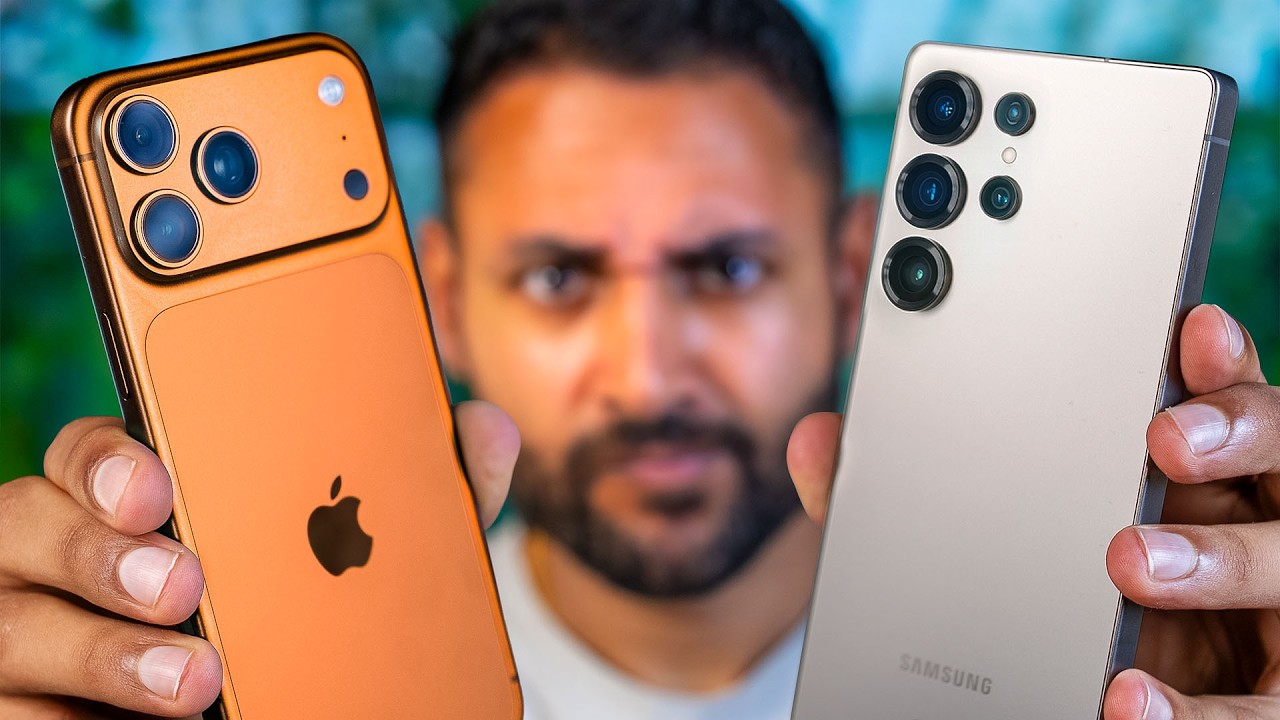The video compares the iPhone 17 Pro Max and Samsung Galaxy S25 Ultra cameras, highlighting the iPhone’s superior front camera experience, natural skin tones, and improved portrait mode, while Samsung excels in zoom sharpness and vibrant colors. Overall, the iPhone offers more consistent detail, better low-light performance, and smoother video features, making it the preferred choice for most users despite Samsung’s strengths in certain areas like 8K time-lapses and dynamic range.
The video compares the camera capabilities of the iPhone 17 Pro Max and the Samsung Galaxy S25 Ultra after extensive testing with over 500 photos and videos on each device. Starting with the front camera, the iPhone 17 Pro Max offers a wider field of view, capturing more of the scene alongside the subject, and better handles sky details without overexposure, unlike the Samsung. Both phones provide excellent stabilization, with the iPhone slightly ahead during more intense movement. The iPhone also introduces a unique feature allowing landscape video recording while holding the phone upright, maintaining eye contact with the camera, which Samsung lacks. Overall, the iPhone’s front camera experience is praised for its natural skin tones and technical accuracy, while Samsung offers more vibrant colors.
When it comes to zoom capabilities, Samsung’s 5x optical zoom with a 50-megapixel sensor generally produces sharper and more contrast-rich images compared to the iPhone’s 4x optical zoom at 48 megapixels. However, this added contrast sometimes sacrifices natural color and texture, making the choice between the two subjective depending on preference. Both phones perform similarly in zoom video quality, with Samsung’s brighter screen being advantageous in daylight. The iPhone offers a smoother and more responsive zoom slider, but overall, both devices deliver satisfying zoom experiences.
In video recording, the gap between the two brands has narrowed significantly. Both phones capture detailed 4K footage with comparable clarity, though Samsung struggles with color consistency across different lenses, especially in greenery and slow-motion shots. The iPhone handles exposure better in challenging lighting, such as overexposed scenes on a merry-go-round. The reviewer notes that both phones are so capable that they use them complementarily: iPhones for reliable skin tones in personal shots and Samsung for 8K time-lapses, a feature the iPhone still lacks.
Portrait mode on the iPhone 17 Pro shows marked improvement, delivering more detailed 12-megapixel images with accurate colors and refined edge detection, even for animals, rivaling DSLR-quality background blur. Samsung’s portraits are more colorful and eye-catching but sometimes less accurate in color representation. For general photography, the iPhone consistently captures more detail due to its higher resolution default shots and faster capture speed, freezing motion more effectively. Samsung excels in making food photos look appetizing with its processing, while the iPhone offers closer macro focusing.
In low-light conditions, both phones face challenges, but Samsung tends to produce grainier images with less consistent color and noisier portraits. The iPhone maintains better natural detail and zoom performance in the dark, though Samsung offers superior dynamic range in some high-contrast scenes. Audio recording is a toss-up; Samsung better suppresses background noise but sometimes at the cost of voice quality, while the iPhone benefits from an extra microphone and advanced audio features. Overall, the reviewer concludes that the iPhone 17 Pro Max has made significant strides, surpassing Samsung in key camera areas, especially in consistency and detail, making it the preferred choice for most users.
